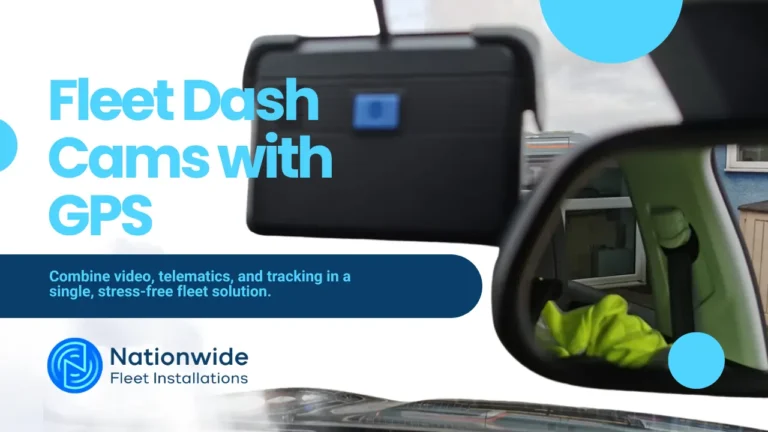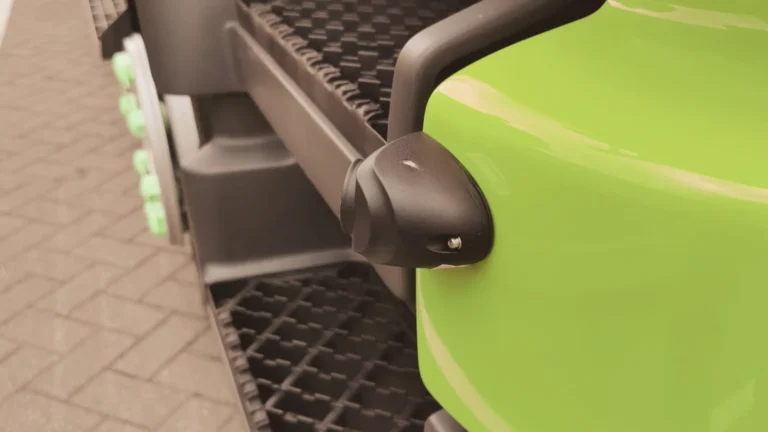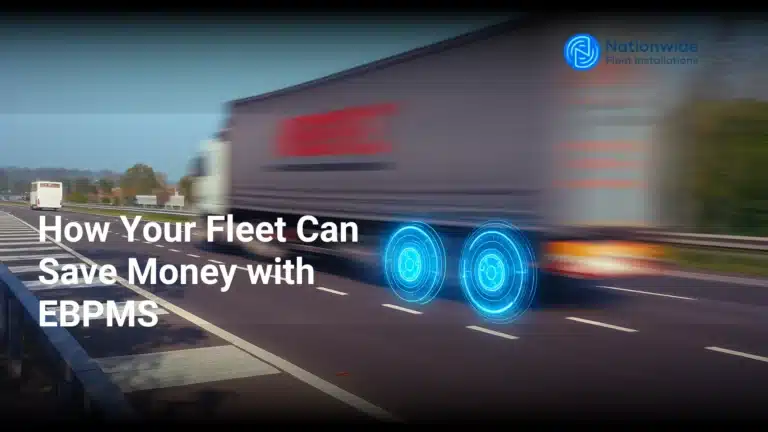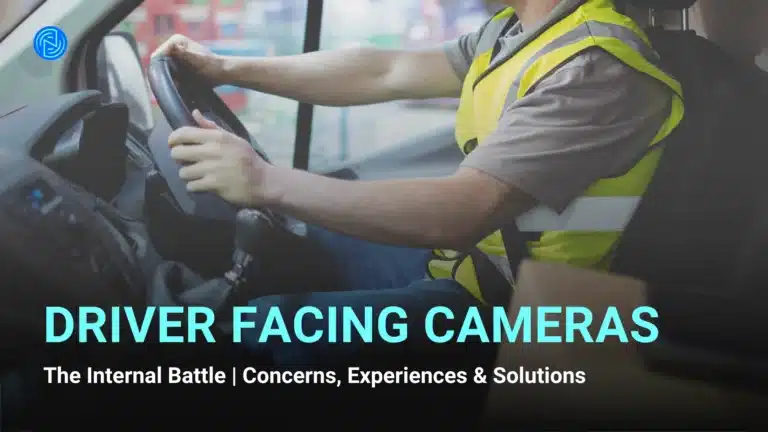What Is Telematics & How Does It Work?
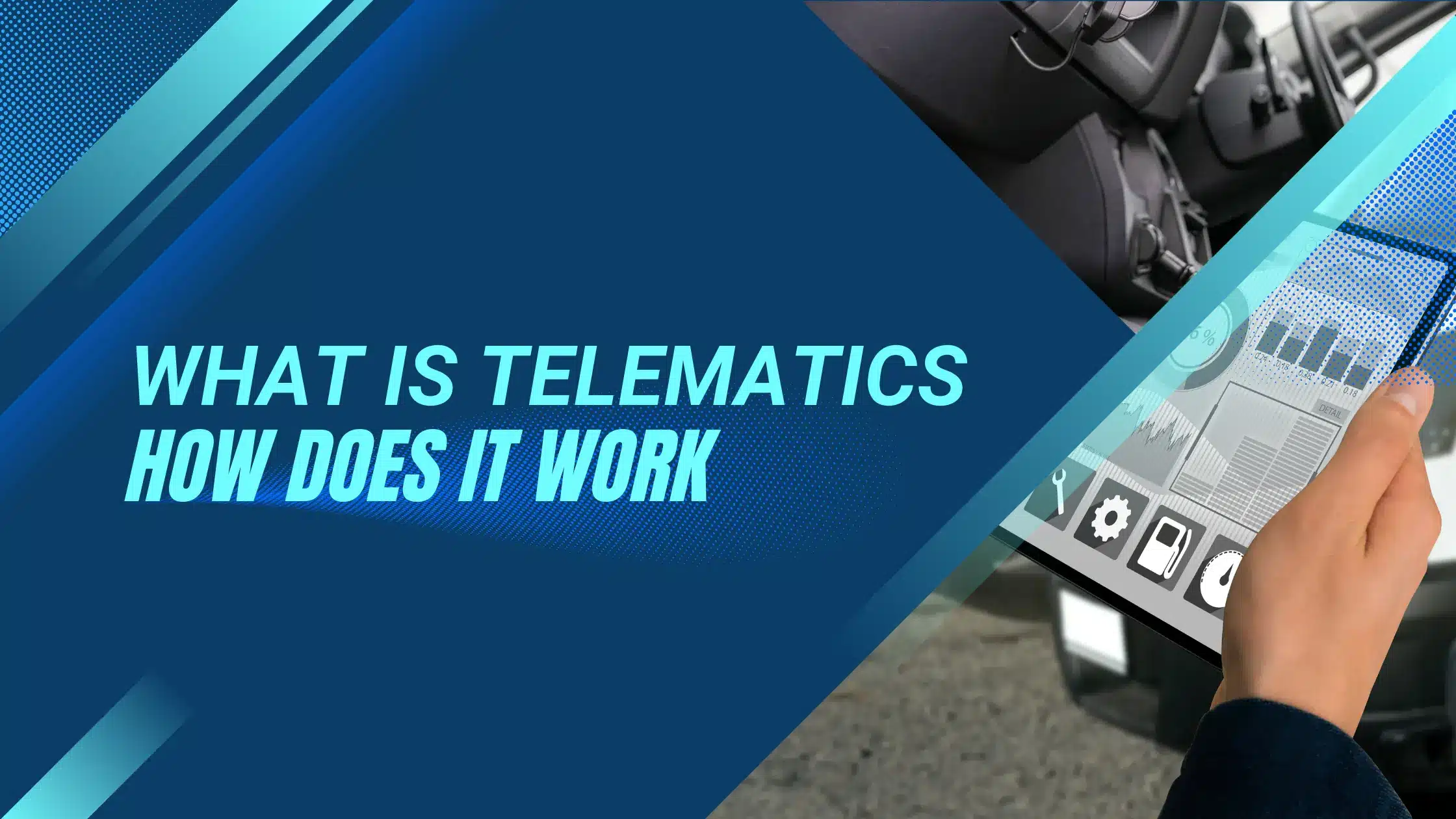
What Is A Telematics System?
Telematics, or a telematics system, is a technology-driven solution designed to monitor and provide real-time insights into the status of vehicles and assets. It uses connectivity, such as cellular networks, sensors, and GPS, to gather, transmit, receive, store and in most cases analyse the data. Today, telematics is widely utilised by fleet operators across various industries and is a key component of many fleet management platforms.
As an integrated technology, drawing on both telecommunications and informatics, telematics combines onboard diagnostics (OBD) and wireless communication. This inclusive approach provides real-time data on vehicle performance, location, and driver behaviour, enabling organisations to enhance operational efficiency, improve fleet safety, and meet increasing regulatory demands.
History: From Paper Maps and GPS Tracking to Full Scale Telematics
Before the digital era, fleet managers relied on paper records and filing cabinets, while drivers navigated using paper maps.
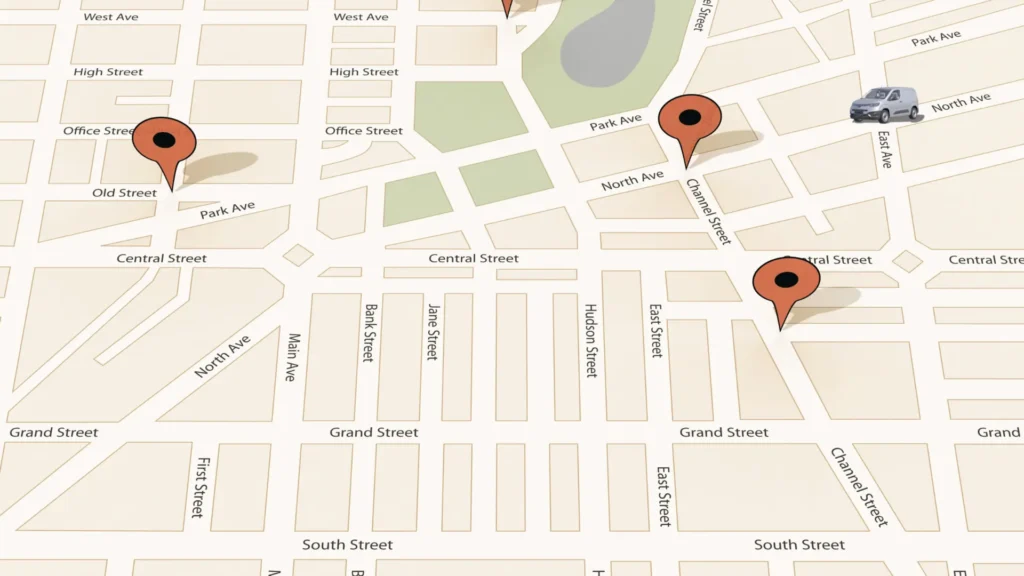
Telematics is the technology that makes GPS tracking possible. GPS tracking was first launched for military use around the 1960s, following the development of the Transit system by the Advanced Research Projects Agency (ARPA) in 1958. The first Transit satellite launched, providing navigation for military and commercial users, including Navy missile submarines. By 1968, a constellation of 36 Transit satellites became operational, offering accuracy to within tens of meters and significantly improving map accuracy of Earth’s land areas.
Our History in Telematics
Telematics isn’t just a buzzword for us; it’s the foundation upon which Nationwide Fleet Installations was built. We’ve been in the trenches, witnessing and participating in its evolution from the very beginning through professional telematics installation services.
Back in the early 1990s, when private companies first grasped the potential of telematics for fleet management, we were there. Picture this: car boots dominated by bulky mobile phone equipment, the very precursors to today’s sophisticated fleet tracking systems. And when faced with the challenge of installing these pioneering devices, our founder, true to our enduring spirit, simply said ‘yes.’ (Link to our story)
That ‘yes’ wasn’t just a word; it was a commitment. It ignited our journey, transforming a daunting task into the cornerstone of our expertise. We grew alongside telematics, adapting as it transitioned from a luxury for select vehicles to an essential tool for professionals across industries. Sales reps, truck drivers, field operatives – they all relied on the burgeoning technology, and we were there, ensuring seamless integration into their fleets.
Innovation has driven telematics beyond simple tracking, incorporating features such as driver behaviour monitoring, video telematics, gamification, and more.
Different Types of Telematics Systems

Telematics systems now encompass a broad range of technologies, including video telematics, vehicle tracking, fleet management, tyre pressure monitoring, fleet optimisation, cold chain management, electric vehicle platforms, and fuel management.
It is essential to recognise that telematics is not just hardware—it is an integrated system of software and hardware that enables the exchange and analysis of data, helping businesses manage real-world vehicle challenges and optimise operations. Here are some of the different types of telematics:
Fleet Telematics
Fleet telematics systems enable the tracking, monitoring, and management of commercial vehicles, providing fleet managers with data and insights into vehicle usage, location, and status. It supports data-driven decision making, helps predict potential issues before they arise, and reduces costs.

OEM Telematics
These telematics systems are built directly into vehicles by Original Equipment Manufacturers (OEMs), such as Ford Telematics Pro. While these are standalone systems, manufacturers increasingly collaborate with third-party telematics providers.
Video Telematics
By integrating video from in-cab cameras, forward-facing cameras, dash cams, and other systems with traditional telematics data, video telematics enhances visibility into driver behaviour, vehicle usage, and risk management. Unlike traditional data-only telematics, video telematics provides fleet managers with a visual context to support decision making.
Asset Tracking
This form of telematics monitors and manages non-vehicle assets, providing insights into location, usage, and operational history. Technologies such as GPS tracking and geofencing help prevent unauthorised use, mitigate theft risks, and ensure assets, such as machinery, excavators, forklifts, and heavy industrial equipment such as generators, lighting, and solar systems, are being used efficiently, reducing costs and preventing theft.
Insurance Telematics
Used in fleet operations, commercial vehicle insurance telematics enables insurers to monitor and calculate risk, reducing incidents, enhancing driver safety, and potentially lowering commercial vehicle insurance premiums. It leverages existing in-vehicle technologies, including cameras, GPS tracking, and fleet management software.
Car Insurance Telematics
Often referred to as “black box telematics,” this system allows insurers to assess driving behaviour, speed, and cornering to calculate risk and tailor insurance premiums. It has been instrumental in offering affordable insurance to high-risk groups, such as young drivers. This type of telematics is essential to sectors such as the leasing and insurance sectors.
Difference between fleet tracking & fleet telematics
In fleet management, we find that the terms fleet tracking and fleet telematics are often used interchangeably, and there is definitely some overlap, but they’re not quite the same. Vehicle tracking (or GPS tracking) is mainly about knowing where your vehicles are. It’s used to prevent theft, monitor routes, and keep your day-to-day operations running efficiently. The main question it answers is: “Where are my vehicles?” It gives you data like live location, route history, and speed.
Fleet telematics, on the other hand, is broader. It covers the full picture, location, yes, but also vehicle health (like engine faults or maintenance alerts), how your drivers are behaving (such as speeding, harsh braking, or idling), fuel usage, safety, and compliance. It uses telecoms technology to send, receive, and store this data so you can make better decisions.
It can measure a wide range of parameters and can be tailored to suit the needs of your fleet. For example, it can monitor braking performance, temperature, tachograph data, fuel usage, drivers’ hours, and even help assess whether vehicles should continue using internal combustion engines or be replaced with electric models.
To summarise, vehicle tracking is one part of telematics systems. Telematics gives you insight into how your vehicles and drivers are performing, not just where they are. It helps you run a safer, more cost-effective, and compliant fleet. It can be customised to suit the needs of your business.
How Does Telematics Work: The Four Essential Components
For telematics to deliver its full potential, it typically needs to operate across four key areas. Understanding these components will help fleet operators—especially those new to telematics or looking to expand their systems—know what to expect.
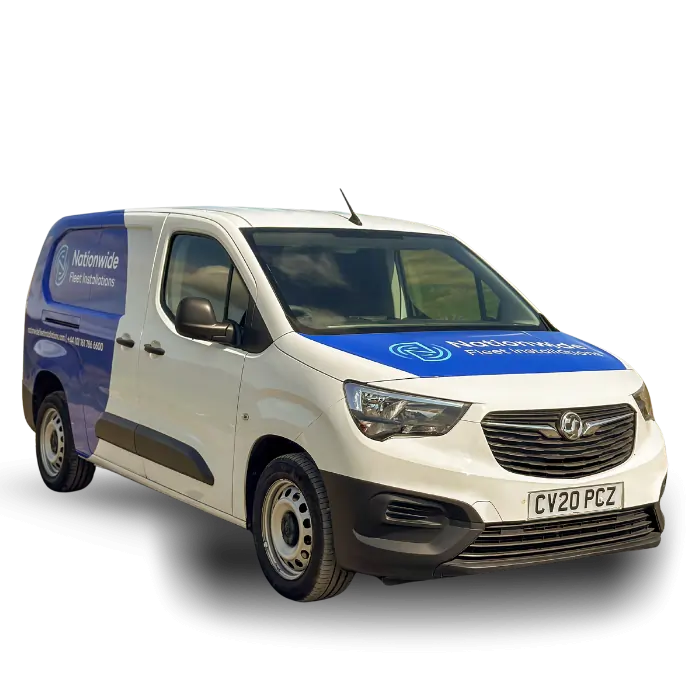
1. Hardware
Telematics systems rely on various devices to capture data from vehicles and assets. These devices come in many forms and serve distinct purposes, including:
- Camera Systems
- Asset trackers
- GPS trackers
- UHF trackers
- OBD devices
- CANbus systems
- Telematics boxes (Black Boxes)
- Sensors and beacons
- Tyre Pressure Monitoring Systems (TPMS)
- Digital video recorders
Each piece of hardware is vital for collecting specific types of data to ensure you have a complete picture of your fleet’s performance.
2. Data Transmission & Collection
Once the hardware gathers the data, it must be transmitted to centralised systems for analysis. Key aspects include:
- Transmission: Data is sent via cellular or satellite networks, utilising SIM cards, modems, and technologies like Bluetooth. With the recent 3G sunset, devices now rely on faster, more reliable 4G networks that even support live video streaming.
- Data Collection: Telematics systems capture a range of data points, including:
- Vehicle speed
- Engine diagnostics
- Fuel usage
- Driving behaviour (using G-force sensors to identify harsh cornering, braking, and acceleration)
- Geofencing activities
- Video recording and live streaming
- Alerts for unusual events
- Lone driver status
- Real-time vehicle location
This seamless transmission and collection of data is essential for creating a real-time overview of your fleet’s operations.
3. Fleet Management Software
The vast amounts of data collected need to be transformed into actionable insights so that they can be useful to fleet managers. This is where fleet management software comes in:
- Making Sense of the Data: These platforms organise and simplify the data, allowing fleet managers to easily interpret and act on the information.
- User Experience (UX): Modern telematics platforms invest heavily in user-friendly design, providing dashboards that are intuitive and streamlined. This means less clutter and more actionable alerts.
- Regular Updates & AI Integration: To address concerns about data overload, many providers continuously enhance their software with AI and improved algorithms to prioritise relevant alerts and insights.
The goal is to empower fleet managers to monitor, analyse, and optimise vehicle performance without feeling overwhelmed by excessive data.
4. Installation

We believe that professional installation is crucial to ensuring that your telematics system works reliably and efficiently. Hardware must be correctly installed and commissioned to ensure accurate data transmission and proper power. Poor installation can lead to hardware faults, which might cause vehicles to break down or experience downtime.
The impact doesn’t stop there; improper installation not only affects the equipment but can also disrupt employees’ work. A flawed rollout may lead staff to develop a negative view of telematics, limiting its overall adoption.
At Nationwide Fleet Installations, we consider professional installation a cornerstone of any telematics system. We ensure that every device is installed to the highest standard to safeguard reliability and maximise the technology’s benefits.
Self-install telematics solutions also exist on the market, designed for easy installation and integration. However, in some cases, we do find that fleet operators still need help from an installer to implement these.
How is Telematics Integrated into Vehicles?
Telematics can come as standard OEM spec, or it can be retrofitted into vehicles:
- OEM-installed telematics, which comes pre-installed in new vehicles, direct from manufacturing.
- Retrofitted telematics, which requires installation by professionals.
Both methods are viable. OEM solutions are often built-in and supported by manufacturers, while retrofitting provides fleet operators with the flexibility and access to advanced third-party solutions. Some vehicle manufacturers even have their own telematics platforms. The telematics industry has grown significantly, with some telematics providers managing over 20,000 customers and processing over 75 billion data points daily.
Most telematics solutions require professional installation for optimal integration. While some devices are marketed as “plug-and-play” or “self-installed,” installation complexity can vary depending on the fleet operator’s technical expertise. Even so-called self-installed devices may require professional support to ensure seamless integration.
Telematics Connections
Here are some connections that make telematics possible:
- On-Board Diagnostics (OBD) – A vehicle’s OBD system enables real-time self-diagnosis and reporting, extracting essential data from the Engine Control Unit (ECU).
- Fleet Management System (FMS) – This encompasses the software, hardware, and communication infrastructure that fleet operators use to manage and optimise operations.
- Tachograph (TACHO) – A device that records driving times, speeds, distances, and rest periods to ensure compliance with regulations.
- CAN Receivers – A technology that captures and processes vehicle data for performance monitoring.
Decoding these connections is essential for fleet operators, enabling them to access vehicle data, enhance operations, and meet regulatory requirements.
Integrating telematics technology into vehicles shouldn’t be complicated
At Nationwide Fleet Installations, we work closely with fleet managers and vehicle technology providers to deliver professional telematics installation solutions across the UK. Backed by a nationwide team of experienced engineers, we ensure installations occur at a time and location that suits you and your customers.
Which Vehicles and Assets Use Telematics?
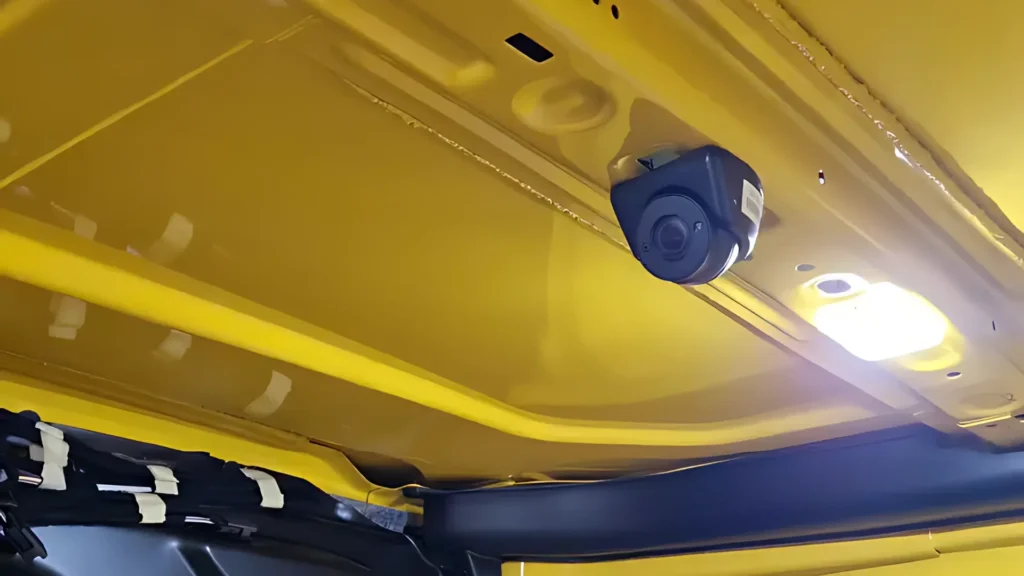
Telematics can be installed in a diverse range of vehicles and assets. With professional installation solutions like ours, telematics has been successfully deployed in:
- Motorcycles
- Cars and trucks
- Cranes
- Airport vehicles
- Industrial equipment, including excavators, diggers, and telehandlers
- Heavy machinery – Generators, drills and other equipment.
Telematics vs GPS Tracking: Understanding the Difference
Although telematics and GPS tracking are often used interchangeably, they serve distinct functions. GPS tracking is a core component of telematics, but it primarily provides location-based data. In contrast, telematics incorporates additional technology such as sensors, cameras, and performance monitoring to deliver a more comprehensive view of a vehicle, including driver behaviour and vehicle diagnostics.
Learn more about the benefits that fleet managers can gain from fleet tracking.
Telematics Data and Fleet Optimisation
Modern telematics solutions provide a wealth of data that helps fleet operators make informed decisions:
- Tyre Pressure Monitoring Systems (TPMS) – Monitors tyre pressure to enhance safety and reduce fuel consumption.
- Electronic Brake Performance Monitoring System (EBPMS) – continuously monitors brake performance during everyday driving, generates reports, and provides real-world data. It enables early detection of faults, reduces downtime, and can improve fuel efficiency.
- Temperature Monitoring – Essential for businesses transporting temperature-sensitive goods.
- Speed and Idling Data – Helps reduce fuel costs and improve route efficiency.
- Fleet Electrification Support – Assists operators in deciding which internal combustion engine (ICE) vehicles should be replaced with electric vehicles (EVs) and which EV models best suit their needs.
Telematics also facilitates digitalisation by reducing reliance on paper-based records. With cloud-based storage and automation, fleet managers can access reports, perform remote monitoring, and streamline communication across their operations.
Who Uses Telematics?
Telematics is widely adopted across multiple industries in the UK, including:
- Emergency services (police, fire, and ambulance)
- Transport and haulage
- Logistics and delivery
- Construction
- Vehicle leasing and car sharing
- Field service engineering
- Utilities
- Public transport
- Facilities management
Benefits of Telematics
Telematics has long been a key technology for improving fleet management, with its adoption steadily growing due to the range of benefits it offers. For fleet operators, telematics provides the ability to track and analyse vehicle performance, enhance operational efficiency, and ensure compliance with regulations through automated data recording. By monitoring factors such as fuel consumption, driver hours, and vehicle maintenance, operators can reduce costs and minimise administrative burdens, ultimately leading to smoother, more cost-effective operations.
At the same time, drivers benefit from safer working conditions and clearer guidance. Telematics systems enable real-time visibility of road conditions, routes, and driving behaviour, helping drivers to avoid accidents and manage fatigue more effectively. This technology can also offer support through route optimisation and alerts that encourage safer driving practices, making it easier for drivers to complete their journeys safely and on time. Overall, both fleet operators and drivers stand to gain significantly from the continued innovation and increasing availability of telematics solutions.
Take a look at our guide on the benefits of telematics for fleets
A Progressive Approach to Telematics
Although telematics may seem complex and expensive at first, many fleet managers find that starting with a basic fleet tracking solution is the best way forward. Once familiar with the core functionalities, you can gradually add more advanced features—such as cameras, TPMS, and video telematics—allowing you to build a tailored solution that grows with your needs.
By understanding these four components, you can confidently invest in telematics, knowing that you’re starting simple and have the flexibility to expand as you go. This approach not only makes implementation manageable but also ensures you can continually enhance your fleet operations over time.
Let’s Work Together
If you are looking for a trusted partner to support your telematics installation requirements, contact us today to schedule a consultation. We are committed to helping fleets and telematics providers implement the right technology solutions, efficiently and reliably.


